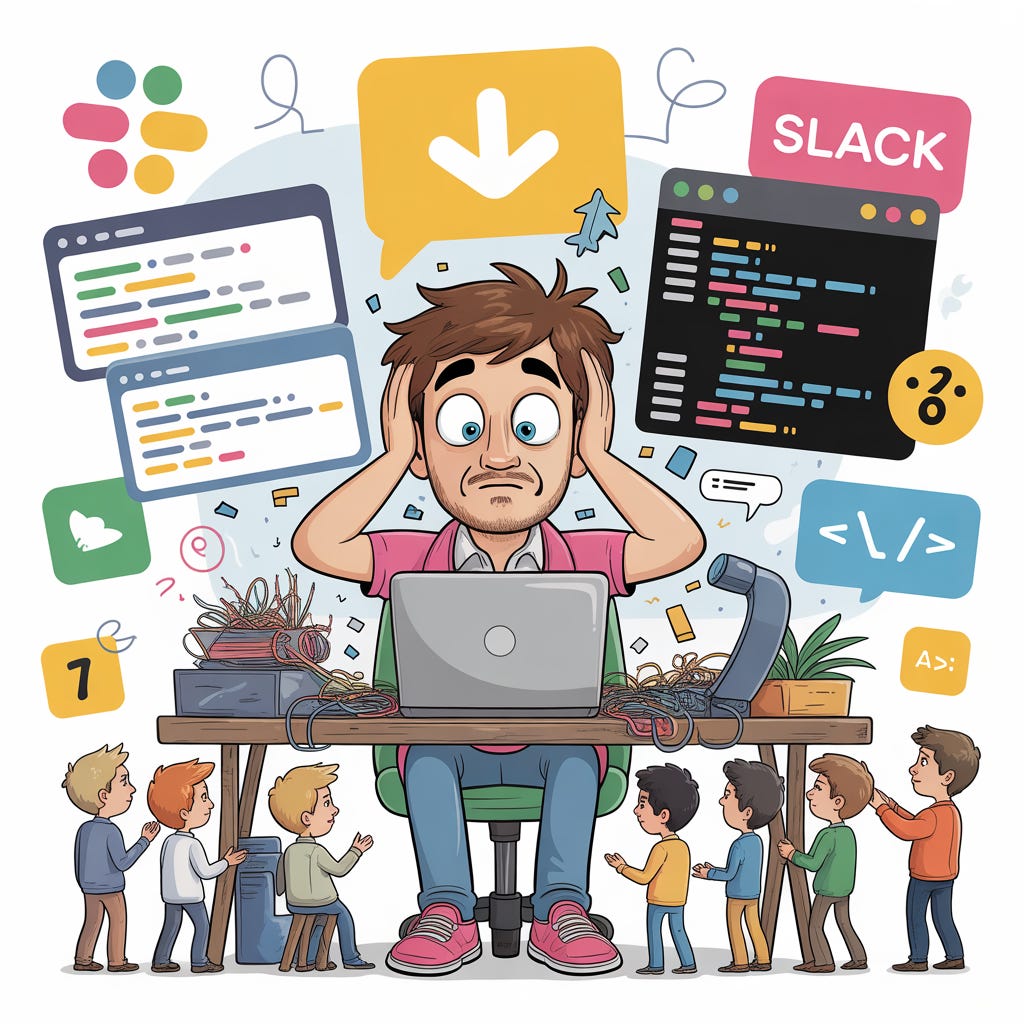Why Being 'Busy' Doesn't Mean Being Productive
It all started with what I thought was a "quick question."
It all started with a single “quick question”, the kind that sneaks into your day like a ninja.
I was deep into building a tricky feature when a junior engineer popped by. “Hey, can you help me debug this?” I thought, five minutes won’t hurt. Fifteen minutes later, I finally got back to my code, only to be dragged into an ad-hoc meeting about some random issue. While I was on the call, Slack exploded with messages from other team members. By the time I returned to my code, I couldn’t even remember what I was working on. My focus was gone.
And that’s when it hit me: I wasn’t multitasking. I was constantly switching contexts, and it was silently sabotaging my productivity.
The Real Problem: Context Switching
The human brain isn’t wired to handle two demanding tasks at the same time. Every time we switch from coding to answering questions, to attending a meeting, to replying to Slack, our focus fractures. Research suggests it can take around 25 minutes to regain full attention after an interruption.
The cost isn’t just time. Constant context switching leads to mental fatigue, slower problem-solving, and less creativity. And in a fast-paced environment, with ad-hoc meetings, junior engineers needing guidance, and endless pings, this can quietly eat away at your entire day.
How I Fixed It
Once I realized context switching was the culprit, I started experimenting with ways to protect my attention. Here’s what worked for me:
1. Prioritize Ruthlessly
Each morning, I pick 1–2 tasks that truly matter and treat them like non-negotiable appointments. Emails, bug fixes, and minor questions come later. Saying “not now” felt uncomfortable at first, but finishing meaningful work made it worth it.
2. Batch Interruptions
Instead of answering Slack messages and emails the moment they arrive, I created specific time blocks for them. Junior engineers learned I had “collaboration meetings” for questions and problem solving. I could focus without guilt, and the team still got the help they needed.
3. Time-Block Deep Work
I reserved chunks of time purely for coding or writing and blocked them on my calendar as “Focus mode“. Notifications off, door closed, deep work mode on. For the first time, I could actually get into flow and stay there.
4. Minimize Distractions
Phone on silent, unnecessary tabs closed, notifications off. These small boundaries prevented tiny interruptions from breaking my focus and stealing 15–20 minutes at a time.
5. Single-Task, Fully
I stopped juggling multiple tasks. One task, full attention. Ironically, I finished things faster and with better quality. Letting go of the “always busy” mindset was surprisingly liberating.
6. Build a Buffer for Chaos
Unexpected things still happen, urgent meetings, production bugs, random questions. But leaving small gaps between tasks absorbed the chaos instead of letting it derail the day. My stress levels dropped, and I stayed in control.
Conclusion
Multitasking might feel like a superpower, but it’s a trap. Context switching is the silent productivity killer that drains energy, focus, and creativity. Once I started protecting my attention with these habits, I finished tasks faster, felt more energized, and finally regained control over my workday.
Focus on one thing at a time, protect your flow, and let real productivity happen.



